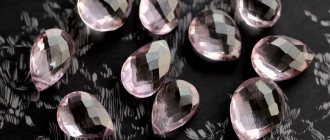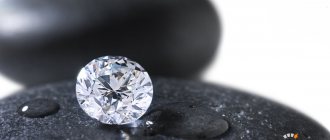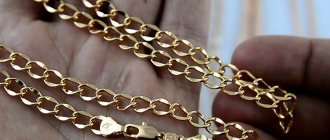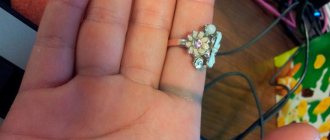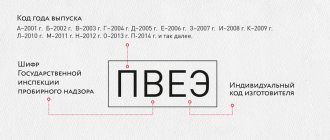March 26, 2022 How to effectively clean gold is a question that sooner or later every jewelry owner will be interested in. Contrary to the popular belief that expensive metal, unlike silver, does not need constant care, we can answer with certainty that gold needs to be looked after just as carefully. Only constant care for the products will allow you to preserve the pristine shine and exceptional beauty of noble 585 for many years.
We will carefully study the causes of darkening and plaque formation, fast, effective, and most importantly, safe ways to clean gold jewelry, regardless of the scale of the problem.
Why does gold jewelry darken?
There are several reasons, each of them is directly related to the physical properties of the metal:
- Low-quality alloy - unfortunately, unscrupulous sellers periodically pass off 375 standard and lower as 585 standard. It is often impossible to check this without an examination, and only over time do characteristic spots appear on the product.
- The polishing layer has worn off - most jewelry today is coated with rhodium for additional shine. Over the years, it wears out, and the surface becomes vulnerable to oxidation processes and other negative factors.
- Constant contact with a sweat-fat environment is the most common cause of darkening. Various diseases, taking antibiotics and other circumstances change the acid balance in the body, which is why gold can suffer when worn every day.
- Reaction to iodine and aggressive household chemicals. That is why it is recommended to remove all jewelry before taking a bath, washing dishes, etc. Potassium compounds can also be present in tap water in small doses, but over time they appear on the metal.
Only the last two examples will allow you to effectively clean gold jewelry from darkening or plaque. In the case of a low-grade alloy, nothing will help - such a product has already “served” its usefulness and will have to be thrown away. But it is quite possible to restore the polishing layer of rhodium, but this should be done by a professional jeweler with experience.
Gold also darkens
Not everyone realizes that gold jewelry darkens, just like their silver counterparts. This is because gold is not used in its pure form, since the metal is very soft and fragile. It is because of various impurities that jewelry can change color over time.
For example, red and pink shades are formed due to copper, and gray is due to the presence of silver in jewelry. You can avoid such situations if you systematically care for your gold and follow all the rules for its use.
How to clean gold using special products?
A time-tested reagent that was used by another generation of our grandmothers is GOI paste developed in the USSR. It contains chromium dioxide, stearin, silicate gel, oleic acid and kerosene. Together they form a thick paste-like mass of dark green color, with which you can easily polish the surface of any precious metal.
There are three types of paste that are suitable for cleaning red or yellow gold:
- No. 1 and No. 2 are gentle compositions containing up to 70% chromium oxide. Suitable for removing minor deposits and polishing to a mirror-like gloss.
- No. 3 – concentration 80% and abrasiveness index in the region of 17 microns. Designed to grind metal to a smooth matte state, removing minor scratches.
- No. 4 – 85% chromium oxide, not intended for jewelry.
Cleaning white gold with GOI paste is prohibited!
The cleaning process itself is quite labor-intensive. The decoration must first be prepared by soaking it in a soap solution (or half a teaspoon of 10% ammonia in 200 ml of water) for several hours. After this, remove the product, apply a thin layer of paste to a soft cloth and rub it in a circular motion. No effort is needed to avoid scratching the coating; upon completion, rinse in running water.
An alternative to GOI paste is the liquid reagent flurin. It contains surfactants, aliphatic alcohol, and a corrosion inhibitor. The softer effect allows it to be used for cleaning gold-plated items and even palladium. The principle is as simple as possible - pour the decoration into a glass container, shake gently and leave for 5-7 minutes, then rinse with cold tap water.
Important: Take all precautions when using any chemical compounds. Wear disposable gloves and safety glasses, and carry out work only during the day in a well-ventilated area. Reagent bottles should be stored in a cool, dark place, out of reach of small children and pets!
How to properly store jewelry?
Jewelry can age even if you haven’t worn it for a long time, because chemical reactions with active substances continue to occur. But negative consequences can be prevented by following storage rules.
When you put away a precious item that you will not wear soon, go over its entire surface with a soft cloth. Flannel or suede will do. This will help remove dirt and greasy deposits.
Jewelry should be stored in boxes or special cases, lined with soft fabric on the inside. In this case, the products should not come into contact with each other. It is better to put especially expensive jewelry in an individual case.
In order for stones in jewelry to retain their original appearance and rich color, special requirements must be observed. Almost all stones are afraid of heat and bright sunlight. This causes them to lose their brightness and may fade. Therefore, it is better to store products with colored precious and semi-precious inserts in a cool place and always in a box.
Pearls require special treatment. To prevent the stone from becoming dull and drying out, wear jewelry with it more often. When putting it away for storage, drop a drop of boiled water inside the box. This way, for some time, it will be possible to create the microclimate necessary for pearls. Remember that excess moisture will also not benefit this stone.
How to clean gold quickly and effectively at home?
Traditional methods of cleaning gold have been around for centuries, but most of them do more harm than good. Let's look at the least dangerous methods for jewelry:
- Hydrogen peroxide solution - a tablespoon per glass of filtered water. To be on the safe side, you can add a drop of liquid soap. Soak the gold item for 5 hours, remove it, rinse it with a stream of cold water and dry it on a cloth.
- Apple cider vinegar 9% - similar soaking, but for 15 minutes maximum. Strictly for red or yellow metal.
- Toothpaste must have a gel consistency without a whitening effect, activated carbon granules, or other abrasive particles. Clean with a soft brush and rinse with water.
Important: You can clean gold with citric acid only if it is very dark; keeping the product in such a solution for more than 5 minutes is not recommended.
Category: question-answer
A diamond engagement ring has darkened. Why and how can you clean it?
Expert opinion
Pribrezhny Gennady Valentinovich
Jeweler 6th category
The reasons for discoloration of jewelry are different: improper use, changes in the composition of sweat, contact with cosmetics. A diamond is a hard stone; ammonia is used to care for such a product - a solution is prepared.
How to polish a white gold watch at home?
Expert opinion
Grishanov Mikhail Petrovich
Jeweler, director of the Grishanov and Co. workshop
It is recommended to use soft materials, preference is given to the dry cleaning method. The watch is quite large, and therefore polishing it yourself can take a lot of time. Preliminary cleaning of the product from contamination with soap diluted with water speeds up the process.
Is it possible to clean the chain with a toothbrush and powder?
Expert opinion
Pribrezhny Gennady Valentinovich
Jeweler 6th category
Abrasive and white gold are incompatible concepts. After such cleaning, the rhodium plating will most likely be damaged.
Cleaning a ring with a stone
How to clean a matte white gold ring?
Expert opinion
Grishanov Mikhail Petrovich
Jeweler, director of the Grishanov and Co. workshop
The best remedy: fine-grained salt (on the tip of a knife), soda, lime - mix the components and leave for 3-4 days so that the mass acquires the desired properties. Then used as directed.
Greenish stains appeared on white gold jewelry. What can I use to clean it?
Expert opinion
Pribrezhny Gennady Valentinovich
Jeweler 6th category
The color change is a consequence of the chemical reaction of the metals after thinning or damage to the rhodium coating. They are eliminated using the bread wrapping method - the product is wrapped in bread pulp.
How to properly clean white gold?
To obtain a signature shade, different proportions of nickel, manganese and palladium are added to white gold alloys, and therefore traditional methods of purifying the noble metal are not suitable. We need gentle methods that will not only remove dirt, but also maintain its original shine, even when you wear the product every day without removing it.
There are several such methods based on long-term soaking:
- Soap solution - it is advisable to use 65% laundry soap and warm filtered water at room temperature. Depending on the amount of plaque, you need to soak the jewelry in it for 10 minutes to half an hour, then carefully wipe the surface with a soft dish sponge and rinse.
- Baking soda solution - two tablespoons per 200 grams of cooled boiled water. The technology is similar: place the jewelry in the liquid for 10-15 minutes, carefully remove it and wipe it with a dry cloth. There is no need to boil the composition; slightly warmed water is enough, but not boiling water, which would pose a risk of spoilage.
Important: Ammonia, vinegar or citric acid should not be used when cleaning white gold - they will damage the rhodium plating and the jewelry will quickly tarnish.
If the white gold has become very dark or covered with black stains, most likely, a caustic acid solution has come into contact with the jewelry, which has destroyed a significant layer of the surface. In this case, it must be immediately taken to a jewelry workshop for polishing or re-plating with rhodium. This is the only way to save the product from further damage.
RULES FOR CARE OF JEWELRY.
In order to preserve the attractive appearance of jewelry for a long time, you should follow simple rules - wear it carefully , since some inserts can be quite fragile, store it properly and remove dirt in a timely manner.
It is recommended to remove jewelry:
- when doing housework;
- when applying cosmetics;
- in the bath, shower, sauna, swimming pool, etc.
Jewelry can be seriously damaged if it is accidentally exposed to chemicals and chemical reagents, in particular mercury, sulfur, iodine and chlorine-containing preparations, which leave stains that are difficult to remove. It is important to remember that jewelry reacts with its external environment. When rubbed and heated, jewelry stones actively attract dust and grease, this is especially true for diamonds , topazes and tourmalines , as a result of which they lose their shine and “game”, so products with such inserts need to be cleaned regularly.
Experts recommend cleaning your jewelry at least once a month and regularly wiping it with a flannel or suede cloth.
Jewelry with or without stones (except for items with emeralds, pearls and other stones of organic origin, as well as items with stones of low hardness, and silver items with niello) can be cleaned with the following compositions:
- warm soapy solution;
- “Fairy” type detergent slightly diluted with warm water;
- sweetened clean water;
- a weak solution of a mixture of ammonia and ethyl alcohol with water;
- ethyl alcohol (wipe);
- special compositions for cleaning gold products and separately silver products;
- special impregnated cloth napkins.
There is another cleaning method - ultrasonic baths using special cleaning (washing) solutions, but it is not suitable for all products. The fact is that during ultrasonic cleaning, jewelry is subject to vibrations. Most natural stones (used in jewelry) contain internal inclusions and irregularities that, when exposed to vibration, can cause internal cracks or splitting of the stone. This procedure can only be carried out by a qualified jeweler who is familiar with the properties of precious stones, because such cleaning can negatively affect the quality of the inserts. Ultrasonic cleaning is contraindicated for jewelry with emeralds, jade, lapis lazuli, amber, pearls, coral, turquoise and enamel.
Despite the effectiveness of folk recipes for cleaning products from dirt, the most reliable and effective way is to use jewelry cosmetics . There is a wide range of special products for cleaning jewelry:
- liquid cleaners for cleaning gold and silver items,
- creams, sprays, foam for polishing gold and silver products,
- cloths for polishing gold and silver.
CARE OF GOLD PRODUCTS.
It is advisable to remove gold items when performing heavy physical work and playing sports. Gold is a soft metal and can be easily deformed and scratched when pressed. After contact with damp skin, the gold product should be wiped with suede or flannel cloth.
How to clean gold:
- You can restore the shine of gold items by immersing them in a solution for 2-3 hours: 1 teaspoon of sugar per glass of water. Then wipe dry with a soft cloth
I'm lint-free. - You can clean gold jewelry by holding it in a slightly alkaline soap (shampoo or baby soap) solution with ammonia: 5-10 drops of ammonia per 1 glass of water. Then rinse in clean water and dry.
- Dirt from gold products can be easily removed with a cotton swab moistened with ethyl alcohol.
- The most reliable and effective way is to use jewelry cosmetics . You can also receive professional care for gold jewelry at a jewelry workshop.
CARE OF SILVER PRODUCTS.
It is important to remove items when performing physical work, playing sports, performing cosmetic, water and physiotherapeutic procedures, which will protect your silver from unnecessary damage or contamination without any maintenance. Silver quickly darkens when exposed to air, so items made from silver alloys should be stored in closed cases.
How to clean silver:
- Silver items can be refreshed by washing in a slightly alkaline soap (shampoo or baby soap) solution with the addition of ammonia: 1 s
a tablespoon of ammonia per 1 liter of water. However, you should not use ammonia when cleaning silver items with blackening. - A silver product can be cleaned: apply a mixture of crushed chalk and ammonia to the product, let it dry, then carefully polish it until shiny with suede or a soft, lint-free cloth.
- Silverware and silver cutlery darken over time and lose their shine when in contact with food or when stored in packaging, paper, or cardboard. They can be cleaned using any of the above methods, but these items need to be further cleaned from time to time by a jeweler.
- The most reliable and effective way is to use jewelry cosmetics.
CARE OF DIAMOND JEWELRY.
Despite the high hardness and strength of diamonds, they should still be protected from possible impacts and high temperatures, since due to mechanical stress, cracks and chips may appear on them. Diamond jewelry should not be stored together; the diamond's edges are very hard and the pieces may scratch each other.
How to clean a diamond:
- The surface of diamonds is generally susceptible to grease and dust. You can get rid of contaminants on the surface of a gemstone by dipping it in a solution of water with a small amount of ammonia for half an hour. Then clean the outer and inner surfaces of the product with a soft brush and place it back into the solution. After this, rinse in warm running water and wipe with a soft cloth.
- To add shine to diamonds, jewelry is washed in warm soapy water from a solution with any detergent. Clean the stones with a soft-bristled toothbrush, then rinse in warm running water and wipe with a soft, lint-free cloth.
- You can receive professional care for your diamond jewelry at a jewelry workshop.
CARE OF JEWELRY WITH COLORED STONES.
There are about 4,000 minerals in the world. Minerals are relatively fragile and can either break apart or develop cracks from sharp impacts. Very fragile stones include emerald, chrysolite and some others. Many jewelry stones should be protected from prolonged exposure to sunlight - amethysts and wine topazes can fade when exposed to ultraviolet radiation. They should also not be heated.
How to clean products with colored stones:
- Jewelry with ruby, sapphire, alexandrite can be washed in warm soapy water with the addition of ammonia (1 tablespoon per glass of water). Then the jewelry should be rinsed under clean water and dried with a soft cloth.
- Noble opal requires extremely careful care. This mineral contains a large amount of moisture. With prolonged exposure to the sun, it becomes dehydrated, and with sudden cooling, the moisture in the mineral crystallizes. All this can cause cracks to form. It is recommended to wash opal products regularly with water.
- The most reliable and effective way is to use jewelry cosmetics. You can receive professional care for jewelry with colored stones at a jewelry workshop.
CARE OF JEWELRY WITH STONES OF ORGANIC ORIGIN
Products made of pearls, mother-of-pearl, corals, amber, and jet require special care, since organic materials of natural origin are mostly soft, porous, and fragile. When washing products with the above inserts, do not use acidic, alkaline or ammonia additives. Warm water and a soft cloth or brush will perfectly clean the jewelry from dirt. Products with natural stones must be protected from sudden temperature changes and prolonged stay near sources of heat and light. Cosmetics (creams, lotions, etc.), especially those containing mercury and sulfur, can have a negative chemical reaction upon contact and negatively affect the appearance of jewelry.
Pearls tend to age and, because of this, lose their shine and even crumble. But don’t worry: as a rule, the life of a pearl is long – 100–150 years. The main thing is that you need to wear it. Frequent wear promotes durability. It is better to store jewelry with pearls separately from other jewelry, since pearls are the softest of all jewelry stones and can be scratched and tarnished from contact with other jewelry, with any glass or metal. Strings of pearls should be stored in a “lying” position so that the string does not stretch. The thread should be replaced from time to time.
How to clean products with organic stones.
• Products with natural turquoise are not recommended to be washed at all; moisture is contraindicated for it, because. Turquoise is a very hygroscopic mineral, and it can change color when exposed to moisture.
Products with turquoise should be cleaned with dry suede, flannel or woolen cloth.
• Amber products can be washed in warm soapy water.
• Products with pearls after prolonged wear can and should be washed using baby soap and warm water. Please note: since pearls are often adhesively set, such items should be cleaned with particular care. They are contraindicated against strong chemical components, which can damage the adhesive composition and, as a result, the reliability of the fastener.
• Products with coral are recommended to be washed in clean cold water and wiped with suede or flannel.
JEWELRY STORAGE.
Proper storage of jewelry allows you to maintain the attractive appearance of your items for as long as possible, cleaning and repairing them less often. Jewelry should be placed in a box lined with soft fabric, separately from each other. To prevent products from coming into contact, they can be placed in small bags made of soft fabric (for example, microfiber or organza). Especially items with semi-precious inserts should not be stored without a box - they may lose their color due to contact with rays. And the jewelry case itself should be placed away from heat sources - high temperatures do not have the best effect on jewelry.
Special boxes that can be purchased in specialized stores are ideal for storage.
We hope these jewelry care tips will help you care for and keep your jewelry in pristine condition.
Happy shopping!
To the list
What is the best way to clean gold with stones?
Cleaning jewelry inlaid with precious or semi-precious stones requires much more attention, patience and perseverance. Most minerals are capricious to temperature changes, do not favor chemicals, and are also vulnerable to long polishing.
We have collected several examples of how to clean products with stones in the table below:
| Type of mineral | What is allowed during cleaning |
| Sapphire, diamond, black (cognac) diamond | Soap solution with a temperature no higher than +25 degrees, ammonia 10% alcohol, polishing with a soft cloth |
| Ruby, topaz, emerald, pearl | Strictly wash in cool, still water (filtered or boiled) without soap, wipe only with a cloth |
| Amethyst, garnet, tourmaline | Cool soapy water, wipe without physical effort, without polishing |
| Peridot, aquamarine | An aqueous solution with the addition of a few drops of 10% ammonia |
| Opal, turquoise | Dry clean only with a piece of natural suede or thick cloth |
Important: Do not heat the rinsing water above room temperature under any circumstances - most precious stones, due to temperature changes, become covered with a fine network of cracks, which provokes further destruction. Ethyl alcohol in any concentration is also detrimental to minerals - do not use it when polishing.
Products with emeralds
An ideal natural emerald without a single defect can hardly be found on sale; such a stone is very expensive. Natural emeralds almost always have defects, but this does not stop them from being precious. To improve their characteristics, emeralds are refined with various resins and oils.
Hence the special requirements for caring for emerald: it is afraid of alkalis, because they wash away the oil, which causes the stone to become brittle and deteriorate. If you have a ring with an emerald, be sure to remove it before washing dishes, laundry, or working with household chemicals.
You can wash emerald jewelry only in a very weak soap solution and then in clean water. Professionals who work with jewelry stones know that ultrasound is not suitable for washing emerald products. This procedure can ruin the stone. If you take a piece with an emerald insert to a good workshop, it will be washed with special gentle products.
Is it possible to polish gold yourself?
We strongly do not recommend doing this without the necessary training and equipment. The reason is that most of the chemical compounds sold supposedly for “polishing” will only give an abrasive effect. Incorrect calculation of the dose of the substance and excessive effort will simply cause more scratches, abrasions and unsightly defects that cannot be corrected.
As for “factory” processing, it is possible to restore rhodium plating on gold only in laboratory conditions. The jewelry is first cleaned, polished, and then placed in a rhodium saline solution and a galvanic bath. Under the influence of electricity, “spraying” is formed, which is simply impossible to achieve using manual methods or reagents.
Gold: details about care and storage
Because your jewelry needs love and care. The Piercing 14K gold line of 14k gold wraps is designed specifically for fresh piercings. Our jewelry uses 14K and 12K gold, which meets the highest international standards for safe hypoallergenic jewelry alloys. These wraps were developed in collaboration with professional piercers, taking into account the high requirements for quality, safety and design of jewelry.
How to care for and clean gold jewelry?
- Use special solutions to clean gold jewelry. Do not immerse jewelry in the solution if it contains inserts of precious/semi-precious stones.
- If you don’t have special products on hand, you can prepare your own soap solution by mixing a drop of liquid soap with water. Or use regular (non-whitening) toothpaste.
- If the jewelry does not have inserts, immerse it in the resulting solution and hold it there for five minutes. If there are inserts, wipe the decoration with a soft cloth soaked in the solution. Don't use paper.
- Use a soft toothbrush to clean dirt under the inserts or in the crevices.
- Rinse with cold running water.
- Wipe gently with a soft cloth and leave until completely dry. Do not place wet jewelry in a case or close it: this may cause oxidation of the alloying components in the gold or silver alloy.
What to do if the gold has tarnished?
Oxidation or tarnishing of gold is very rare, but it does happen. Don't be alarmed - this is a natural reaction of metals to moisture. 14, 12 and 18 karat gold contain alloying metals in their alloys; when in contact with moisture, they can oxidize. To remove such stains, soak a soft cloth in a special solution or a soap solution you prepare yourself and wipe the stained areas. And see the points above.
How to store gold jewelry?
- Store your jewelry in open boxes or cases. Do not remove the silico gel bags from the box as they will absorb excess moisture. If jewelry is left for a long time in closed boxes that have previously been exposed to moisture (60% humidity), they may oxidize.
- Never store jewelry in the bathroom or in rooms with high humidity.
- Remove jewelry before physical activity and in the gym.
- Avoid direct contact with jewelry with chemicals (including perfume, cream, household chemicals).
- Love your jewelry, take care of it and wear it as often as possible.
Professional gold cleaning
Today, many jewelry centers, private craftsmen and companies specializing in cleaning accessories offer professional cleaning services for gold jewelry. This procedure has both pros and cons. Among the advantages it is worth noting:
- The craftsmen have special equipment that allows them to thoroughly clean even the most inaccessible corners and recesses of the jewelry (for example, small brushes, ultrasonic devices);
- professional cleaning products that make cleaning even more effective - after the cleaning procedure from a good master, the jewelry looks, if not better than on the day of purchase, then at least the same;
- the ability to clean even the most stubborn stains;
- no need to spend time and effort on thorough cleaning.
This procedure also has its disadvantages:
- the cost of professional cleaning is usually higher than the cost of a special product for home use and, especially, folk remedies;
- there is a risk of choosing an unqualified craftsman or even a fraudster (especially in small towns). To avoid this, when choosing a center, rely on reviews from other clients and pay attention to large chains;
- For minor stains and light plaque, the cost of the procedure is not justified.
Professional gold cleaning is more effective than home cleaning (of course, if you contact a good master)
Many jewelry stores offer free cleaning promotions - try looking for similar offers in your city.
Average prices for professional cleaning
The cost of such a service as professional cleaning of gold jewelry depends on the region. Of course, in the capital, prices for cleaning products will be significantly higher than outside the Moscow Ring Road. The approximate cost of cleaning gold jewelry without inserts in an ultrasonic bath will be:
- Moscow - from 300 rubles;
- St. Petersburg - from 250 rubles;
- regions - 150 rubles.
If you want to clean a product with an insert, prices will be slightly higher:
- Moscow - from 350 rubles;
- St. Petersburg - from 350 rubles;
- regions - from 250 rubles.
The price for cleaning matte gold is approximately as follows:
- Moscow - from 350 rubles;
- St. Petersburg - from 300 rubles;
- regions - from 300 rubles.
Prevention
You can preserve your jewelry's original appearance even without thorough cleaning. To do this, you should develop several useful habits:
- Remove the gold daily and wipe it with a microfiber cloth. This will remove surface dirt and dust that has accumulated during the day. If you don’t have a microfiber cloth, a suede or flannel cloth will do.
- Areas with stones should be cleaned with special care, as this is where dust accumulates. In addition to surface cleaning, periodically wipe the area with a cotton swab soaked in glycerin.
- Various cosmetics also have a bad effect on the condition of the aurum. Therefore, it is recommended to remove rings when applying cream to your hands, and also make sure that perfume does not splash on your jewelry.
- You should not do household chores wearing rings and bracelets to avoid water and chemicals getting on the metal.
- Remove all jewelry before playing sports. This will protect them from breakage, scratches and loss.
- Don't forget to take off your jewelry when taking a bath or shower, or swimming in the pool or sea.
- Jewelry should be stored in a box lined with soft fabric inside. Place them separately from each other so that they do not touch each other.
By following all these simple rules, you will not only maintain the presentable appearance of your products, but also significantly extend their service life.

